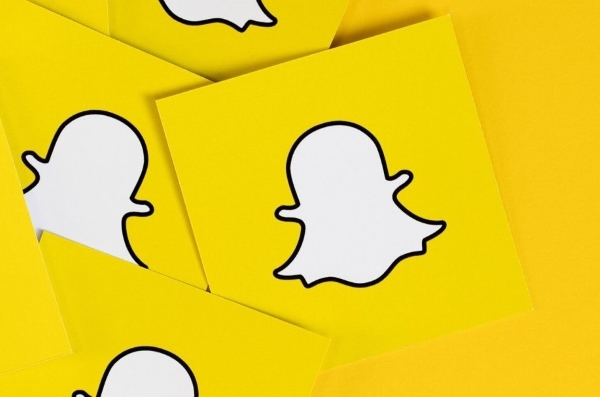From its humble yet massive advent in computers since the 1980s, the computer virus has grown to be become a more formidable and stealthy creature of the cyber world. Malware over the passage of two decades has grown in different and elaborate forms such as Macro Virus, Trojans, Worms and the like. In this post we will tell you the difference between these 10 Horsemen who are likely to cause an apocalypse for your PC and the mechanism you can use to avoid them.
1. Worm
Worm as the name indicates is a malware that cannot just self-replicate but also find its way across other computers via the network. In my previous job a guy nearly got fired for infecting his system with a worm. Although this kind of malware particularly in a network environment can be removed not just by common anti malware tools but also by certain batches that can be executed via a domain to get rid of it. Nonetheless, the worm can often go undetected in the wake of network vulnerabilities and can cause major loss of functionality for systems.
2. Trojan Horse
If you have seen Troy or read the story than you should known what a Trojan Horse is. It is like the horse shown in the Troy movie that was used by the army of Achilles to infiltrate the enemy city. In other words a Trojan might appear to be a harmless program that can infect your system under the radar. In order to avoid Trojans you must be careful about the software that you download particularly from P2P programs such as Torrent clients. Many Trojans are hidden under the name of new movies and famous software programs. This way a user often downloads a Trojan Horse thinking that he/she is downloading a software, movie, song, etc. One of the biggest reason Trojans successfully infects systems is because many users disable their anti-virus programs thinking that the Trojan warning for their downloaded Torrent file is actually a software crack. A Trojan will normally infect your system due to your own negligence and care free downloading habits.
3. Resident Virus
If you have seen a movie/s from the Resident Evil franchise or played any of the games in this series than you should be aware of the T-Virus. A Resident Virus is no different from the T-Virus as it infects your RAM in the same way and can cause major disruptions in your PC by executing itself from your RAM. It can corrupt your files and programs just like the zombies in the Resident Evil movies and eventually lead your computer into becoming the living dead. Resident viruses are although very dangerous for your system however, they can be easily detected if your anti-virus has in depth scanning capability. This kind of virus normally infects only copied files and users can find discrepancies by noticing any visible changes that they may notice in their copied content.
4. Boot Sector Virus
This kind of virus affects the boot sector of floppies (does anyone even use that anymore?) and hard disks. Back in the day an infected floppy could have given you this virus, however, thanks to modern technology you can get a boot sector virus from anywhere nowadays. To get rid of such a virus you must keep a backup of your primary drive that you can reload anytime when you either detect the boot sector virus via a virus scanner or even when you are unable to boot windows when the Boot Sector Virus completely takes over.
5. Overwrite Virus
This kind of virus can render its infected directories as useless which can lead to major data loss. In fact to get rid of this virus you will actually have to delete your infected files. This kind of virus can be transmitted via downloaded attachments and a very similar example is the famous “I Love You Virus” of the 1990s that infected data in many offices around the world. It was sent in the form of an email appearing to be a love letter that I’m sure cost a lot of employees their jobs. Such viruses are normally not present nowadays in their pure form as they were used back in the day as malicious codes. The best way to avoid an overwrite virus is to scan all attachments before downloading them. Many online services scan attachments automatically, however, it’s worth having an anti virus that also scans downloaded files and attachments.
6. Macro Virus
The Macro Virus is designed for certain macro based programs and infects the files of specific programs. Some anti-viruses provide specific protection for certain file types, enabling such protection might help you avoid this virus. A few signs of identifying when you have such a virus are as follows:
- 1. When your computer gets too slow.
- 2. When your computer prompts for a password on a file that doesn’t require a password.
- 3. Your computer displays unusual error messages or saves documents as template files.
In order to prevent being infected from a Macro Virus, you must be very careful to check Digital Signatures before executing installation files. A Macro Virus is easily removable if your anti-virus software is updated.
7. FAT Virus
FAT (File Allocation Table) is a mechanism by Microsoft that is used in many Windows OS. FAT keeps track of all content on a hard disk. The FAT virus can prevent access to certain areas of your hard drive and eventually overwrite or destroy complete directories. This kind of virus is a major threat to your data, therefore you must keep a backup of your data at all times to avoid such a scenario. Although common anti viruses should normally get rid of this virus, however, restoring a backup from utilities such as Norton Ghost or Windows Backup And Restore should also do the job. An effective way of finding this Virus type is to run the Check Disk utility which often finds it. Many a times the FAT virus hides in multiple folders and initiates after being launched. This kind of Virus are often disguised by file names such as WINSTART.BAT or INSTALL.EXE so that a user may execute them thinking that it is a normal program. The best precaution of avoiding such problems is to check every executable file that you run on your PC and avoid installing software which do not have verified digital signatures.
8. Direct Action Virus
This kind of virus replicates when executed and begins to infect particularly the directory that it resides in. This kind of virus also infects those in directories that are attached to the AUTOEXEC.BAT file path. In most cases this kind of virus does not delete your files or affect your systems performance, however, it prevents access to parts of your hard disk that it infects. Direct Action Viruses are easy to spot and delete via normal anti virus software. A common virus scanner should detect and delete this kind of virus fairly easily along with restoring access to your files.
9. Spyware
Spyware is a malware that secretly gets installed on systems and attempts to collects and send information (such as credit card details, banking credentials, online account passwords,etc) to a ,malicious source, which is normally the person who designed it. A spyware is normally installed with programs that appear to be free and harmless, as well as from websites that contain adult content.
10. Adware
Adware is a software that contains embedded advertisements within an application. Since some software (particularly freeware) are Ad-supported. Therefore, not all Adware are harmful. As Adware is considered a legitimate alternative for consumers who do not wish to pay for a software. However, there are also programs that forcibly take over your systems resources (such as the browser) to open repeated pop-ups of a specific website or to provide unwanted Ads. A very common example are the toolbars that come with some software (that are not shown during the installation process) which become impossible to uninstall. Adware many a times also get installed when someone visits a website with adult content. This Adware is installed without consent from the user and repeatedly displays pop-ups from porn websites. The best way to avoid Adware is to check for user comments before installing freeware.
So what out for these 10 deadly malware types and keep your computers safe.




